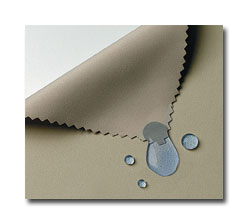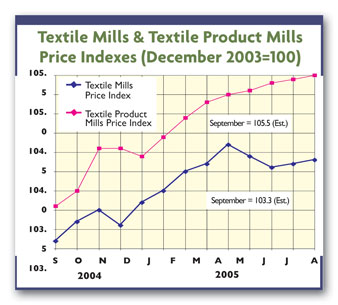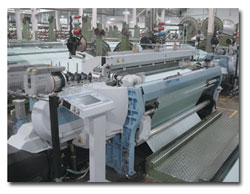As a result of further sales growth of synthetic turf, investment projects amounting to EUR 10
million for Ten Cate Thiolon, part of the sector Industrial Fabrics and Grass of Royal Ten Cate,
have been approved. Taken into consideration the total amount of investments in fixed assets of
Royal Ten Cate during the whole of 2004, this is a substantial investment for the company. The
investment is aimed for capacity increase as well as for future cost reductions and improvements of
logistics. Investments will take place in both the US and The Netherlands. The sector Industrial
Fabrics and Grass showed a sound organic growth. For 2006 Ten Cate Thiolon sees a continuation of
its growth, which will also take place in other segments than specific sport applications.
Landscaping is such an example. In the United States multi-sport pitches for universities and
high-schools form an important area of sales as well.
In the sports market the brand Thiolon Grass(R) stands for high-grade synthetic turf that has
a prominent position with marketing companies and installers in the offerings of their systems.
Especially in the US and the top segment of the European market, there is growing demand for such
products for several applications. Thiolon Grass(R) combines durability with slide-friendly
properties for players. Soccer is currently a substantial growth market and there is a gradual
shift in perception with top clubs towards the use of synthetic turf. This is also caused by
stimulating activities by UEFA and FIFA. Synthetic turf creates improved possibilities for regions
with less favourable climate conditions, which will stimulate soccer globally. Similar developments
are seen with other sports. An increased need to save water is an argument to use synthetic turf as
well. Injury-related costs are a major aspect for top clubs and synthetic grass provides, with its
constant and predictable surface, a positive contribution to medically safe and individually
targeted training methods and control over physical aspects.
Ten Cate Thiolon works together with education institutes and includes health and safety in
its research and development. For the further growth of the market and a broad acceptation of
synthetic turf it is important that this knowledge is broadly applied. In particular for the
further growth in the volume market for soccer and other “contact sports” like American football
and rugby, an affordable, safe and durable grass surface is a key development. Ten Cate Thiolon is
well positioned to meet the requirements of the market and will maintain its leadership.
Concluding, the current developments in terms of quality and performance will lead to a greater
acceptance of synthetic turf, which stimulates market growth.Therefore Ten Cate Thiolon foresees
good opportunities for further growth in the future.
Press Release Courtesy Of PR Newswire
October 2005







